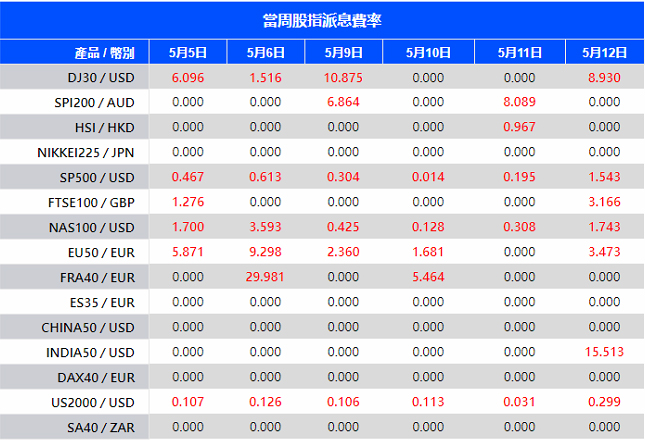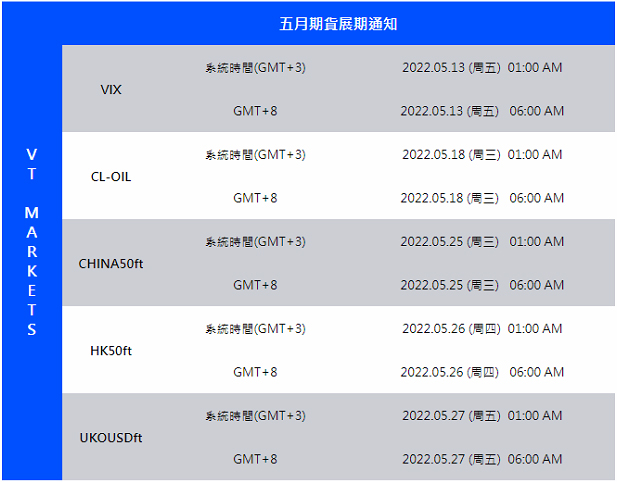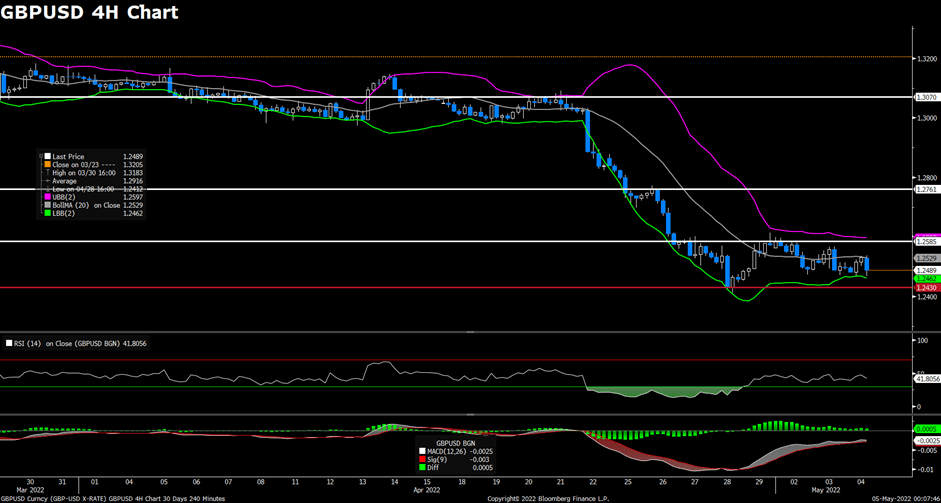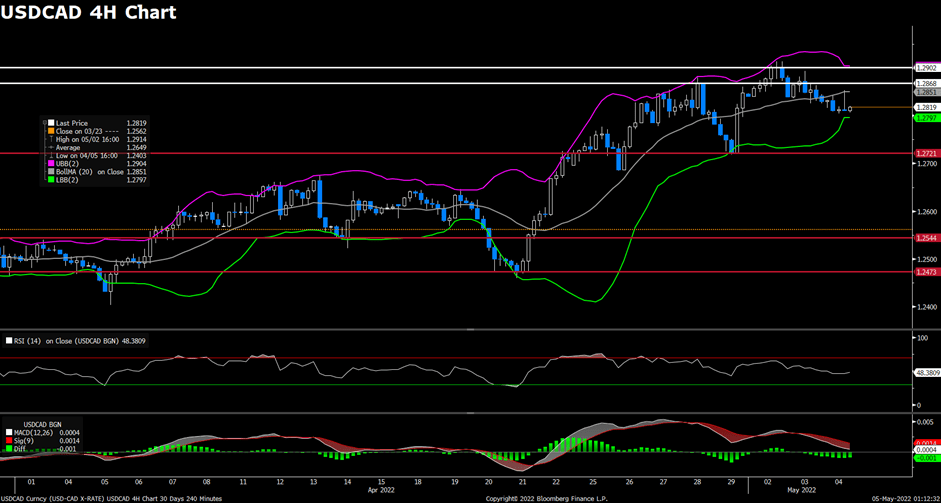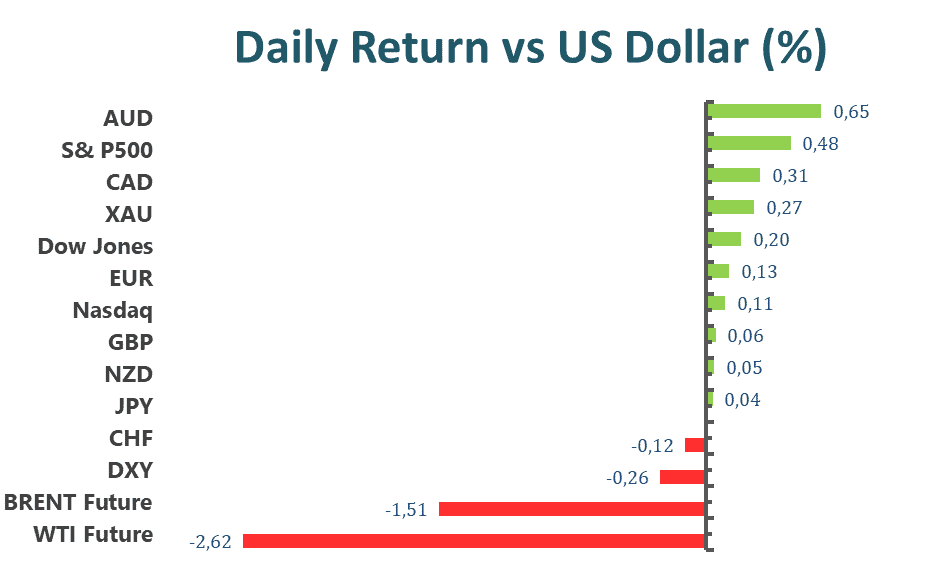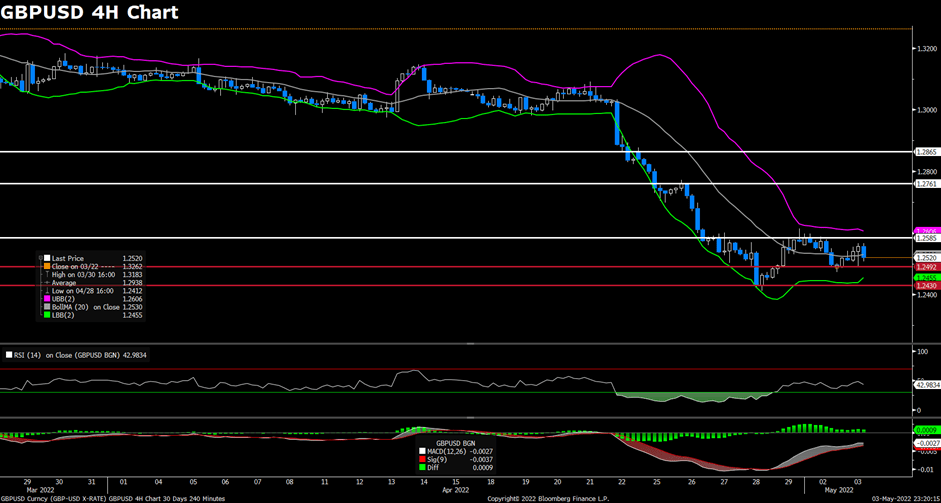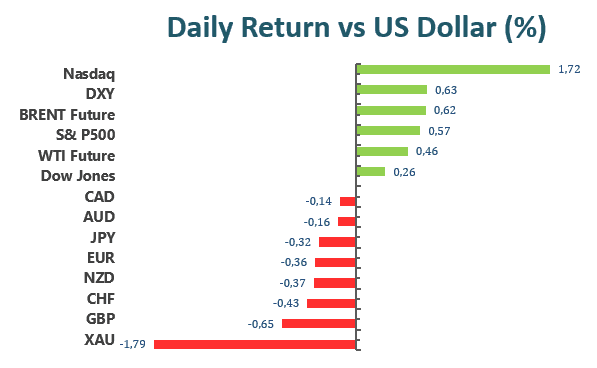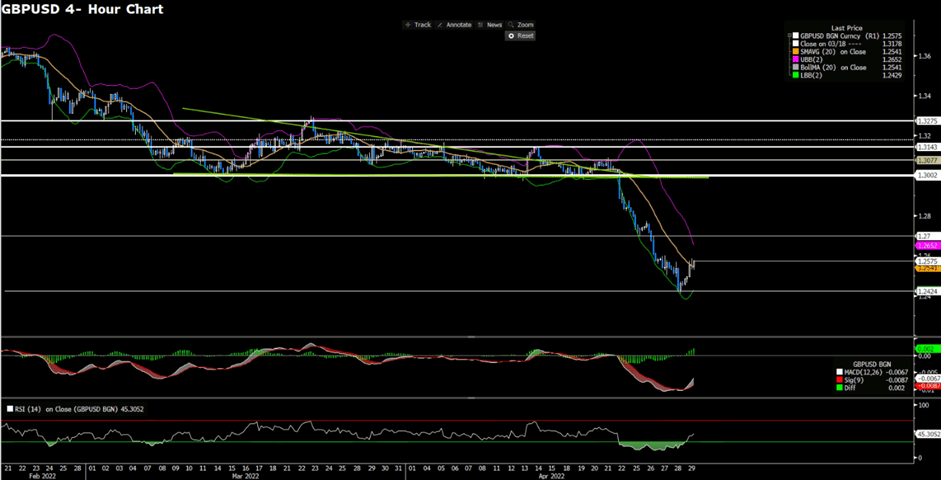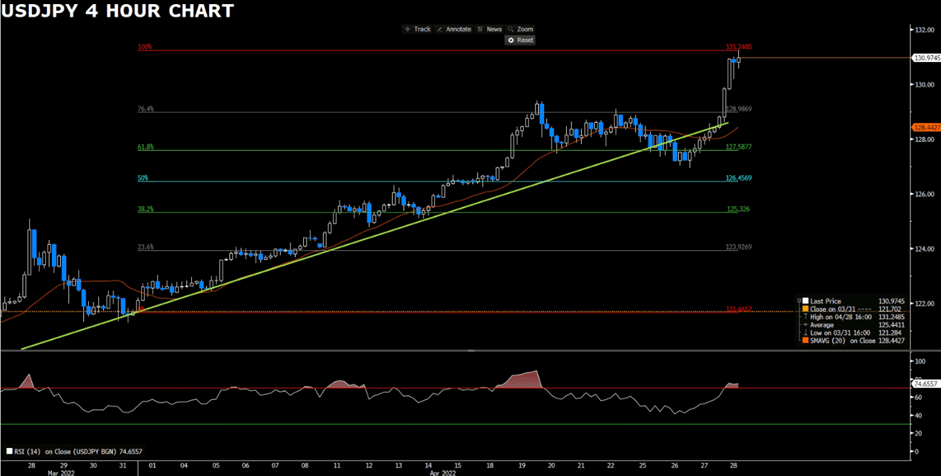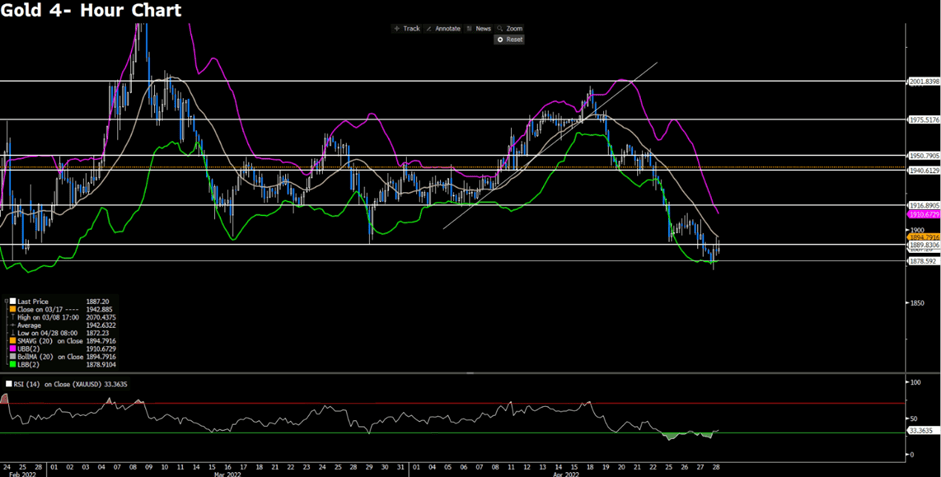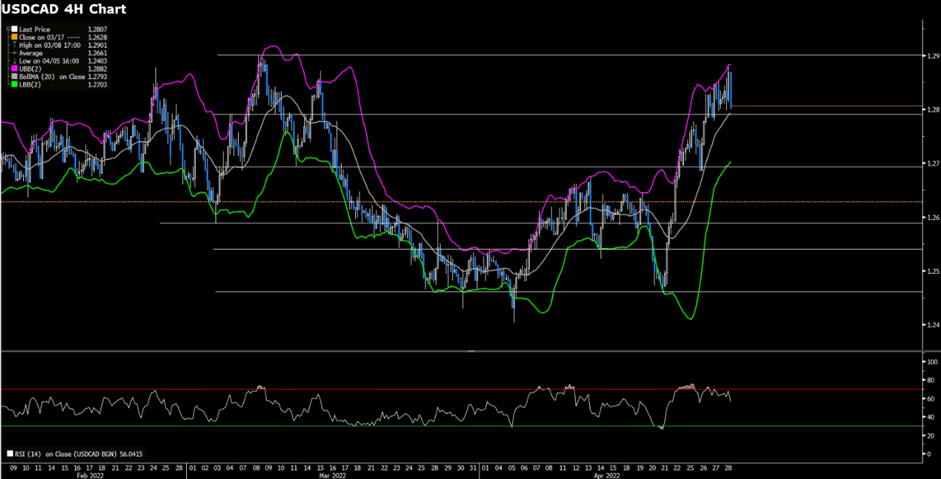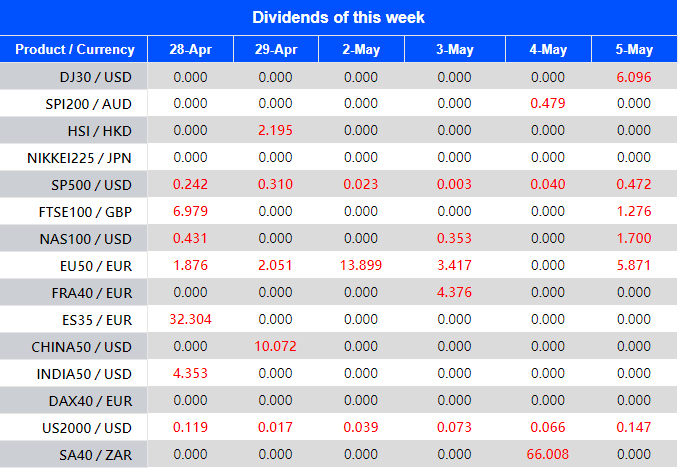U.S. equities experienced a sharp sell-off over the course of the previous trading day. The Dow Jones Industrial Average plummeted 3.12% to close at 32997.97, the S&P 500 fell 3.57% to close at 4146.87, and the Nasdaq Composite crashed 4.99% to close at 12317.69. U.S. equities sold off while the U.S. 10-year Treasury yield soared past 3%. Bonds also sold off as the global economic outlook grows dimmer by the day. The BoE’s economic guidance issued yesterday spells trouble for dip buyers, globally, and Sterling bulls. The mention of stagflation, by the Bank of England, sent market participants into a frenzy sell-off.

Global central banks have issued warnings of possible strong equity valuation pullbacks as they begin to reverse course from easy money policies. Fed Chair Jerome Powell stated, that “some pain” would be caused as the Central Bank attempts to rein in inflation.

Currently, the FOMC dot plot points to a terminal interest rate of 2.83% by the end of 2022. Interest rates are projected to peak next year at 3.235% and begin to fall thereafter.

Main Pairs Movement
Over the previous trading day, the benchmark U.S. 10-year Treasury yield soared past 3% as bonds sold off sharply amid a broad-based equity market sell-off. The Dollar Index gained 1.01% as other leading currencies faltered.
The Euro fell 0.74% against the Dollar. Dollar demand soared as the global economic outlook grows dim and market participants rotate into safe-haven assets. Despite a commodity price cool down over the past couple of days, the economic pressure exerted by inflated energy and commodity prices has already dampened the economic growth of the EU.
The Pound plummeted 2.09% against the dollar as the Bank of England issued another round of interest rate hikes amid slowing economic growth. The BoE’s attempt to control inflation could exert additional pressure on the gloomy economic outlook of Britain.
The Dollar climbed 0.79% against the Canadian Loonie as the Dollar was buoyed by a broad-based demand. Soaring U.S. treasury yields and interest rate differentials between the two countries continue to favor the Dollar against the Loonie.
Technical Analysis
EURUSD (4-Hour Chart)

The EUR/USD pair declined on Thursday, retreating from a weekly high that was touched yesterday after the US Federal Reserve monetary policy announcement. The pair was trading sideways in the first half of the day, then started to see fresh selling and dropped towards the 1.054 area during the European session. The pair is now trading at 1.0517, posting a 0.96% loss daily. EUR/USD stays in the negative territory amid renewed US dollar strength, as the greenback staged a goodish rebound on expectations that the Fed would hike interest rates by 50 bps at the next four policy meetings. But Fed Chair Powell also said that they were not actively considering 75 bps rate hikes. For the Euro, the fact that the European Union is looking to embargo oil from Russia within six months might also act as a headwind for the EUR/USD pair.
For the technical aspect, the RSI indicator is 42 figures as of writing, suggesting that the downside is more favored as the RSI stays below the mid-line. As for the Bollinger Bands, the price fell from the upper band and then crosses below the moving average, therefore the lower band becomes the loss target. In conclusion, we think the market will be bearish as the pair is heading to re-test the 1.0485 support, a break below that level might open the road for additional losses. The falling RSI also reflects bear signals.
Resistance: 1.0622, 1.0730, 1.0922
Support: 1.0485
GBPUSD (4-Hour Chart)

The pair GBP/USD tumbled on Thursday, suffering heavy intraday losses below the 1.238 level amid the Bank of England’s dovish outlook. The pair remained under bearish momentum for most of the day, slumping to its lowest level since July 2020 after BoE’s policy announcements. At the time of writing, the cable keeps refreshing its daily lows and stays in negative territory with a 2.06% loss for the day. The prospects for a further tightening by the Fed revived the demand for the US dollar and exerted downward pressure on the cable, as Fed policymakers were ready to approve 50 bps rate hikes at upcoming meetings. For the British pound, the Bank of England lifted its interest rate for the fourth time in the current tightening cycle as expected. However, the central bank warned about a sharp slowdown and is forecasting the UK economy to contract by 0.25% in 2023, which weighed heavily on the cable.
For the technical aspect, the RSI indicator is 32 figures as of writing, suggesting that the pair remains under heavy bearish momentum as RSI is reaching the oversold zone. For the Bollinger Bands, the price moved out of the lower band so a strong trend continuation can be expected. In conclusion, we think the market will be bearish as the pair already fell below the previous support at 1.2430. Additional near-term losses could be expected for the pair.
Resistance: 1.2585, 1.2761, 1.3070
Support: 1.2430
USDCAD (4-Hour Chart)
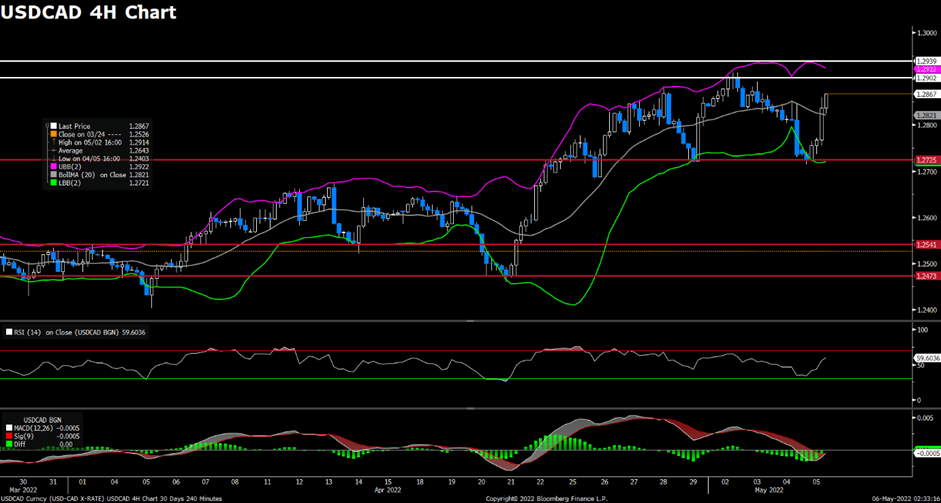
As the US dollar regained upside momentum amid dismal market mood today, the pair USD/CAD trimmed yesterday’s losses and rebounded from weekly lows after the Fed’s interest rates decision. The pair flirted with the 1.272~1.274 area during the Asian session, then started to see heavy buying and refreshed its daily high above the 1.285 level in the US session. USD/CAD is trading at 1.2861 at the time of writing, rising 0.98% daily. The surging US bond yields helped the US dollar to find demand and erased all losses from the Fed meeting. On top of that, concerns about the EU’s Russian oil embargo kept pushing WTI higher, which rose 0.83% for the day. The EU nears an agreement on a plan that would phase out all Russian oil imports within six months.
For the technical aspect, the RSI indicator is 58 figures as of writing, suggesting that the upside is more favored as the RSI stays above the MD-line. As for the Bollinger Bands, the price rebounds from the lower band and then crosses above the moving average, therefore the upper band becomes the profit target. In conclusion, we think the market will be bullish as the pair is heading to test the 1.2902 resistance. A break above that level would expose 1.2939 and the rising RSI also reflects bull signals.
Resistance: 1.2902, 1.2939
Support: 1.2725, 1.2541, 1.2473
Economic Data
| Currency | Data | Time (GMT + 8) | Forecast |
| GBP | Construction PMI (Apr) | 16:30 | 58.0 |
| USD | Nonfarm Payrolls (Apr) | 20:30 | 391K |
| USD | Unemployment Rate (Apr) | 20:30 | 3.5% |
| CAD | Employment Change (Apr) | 20:30 | 55.0K |
| CAD | Ivey PMI (Apr) | 22:00 | 60.0 |
